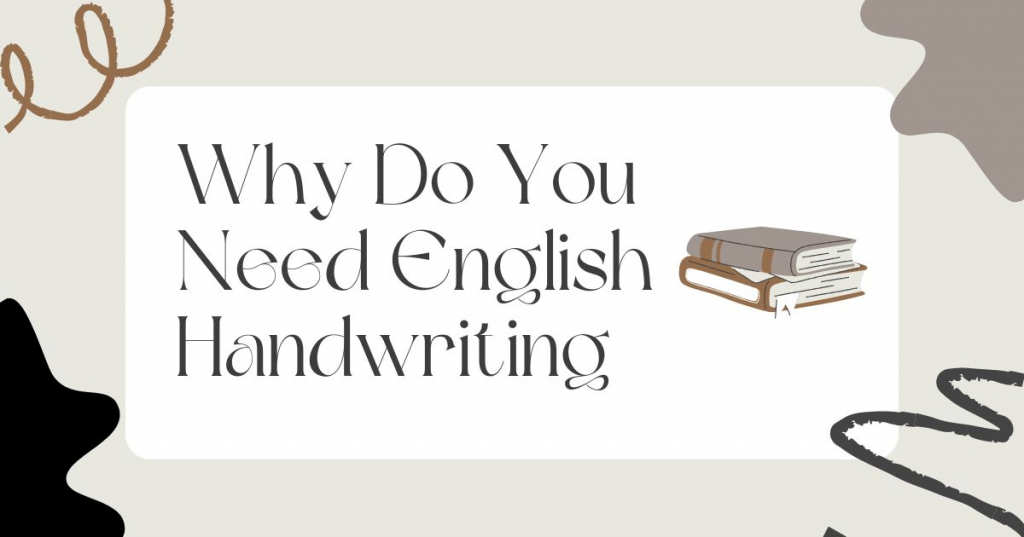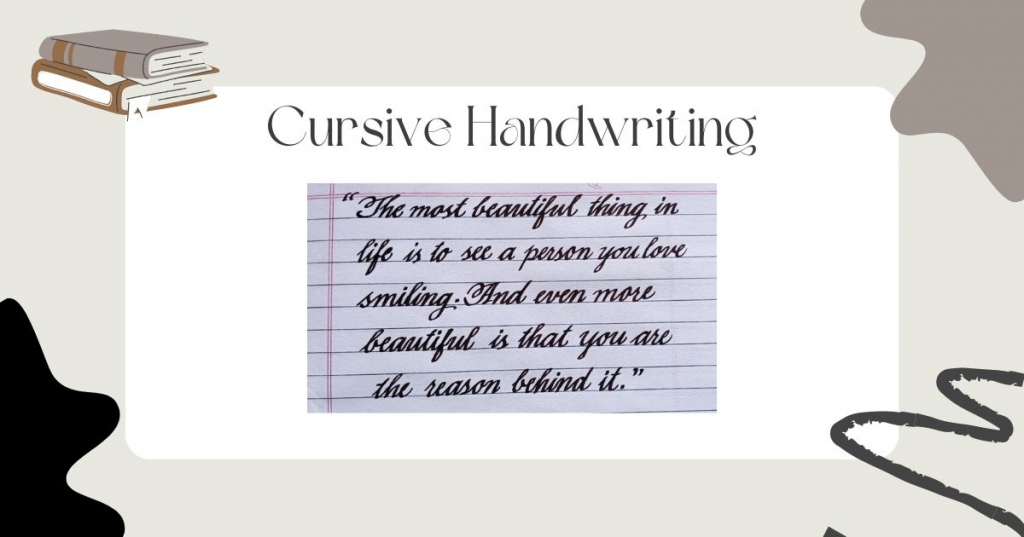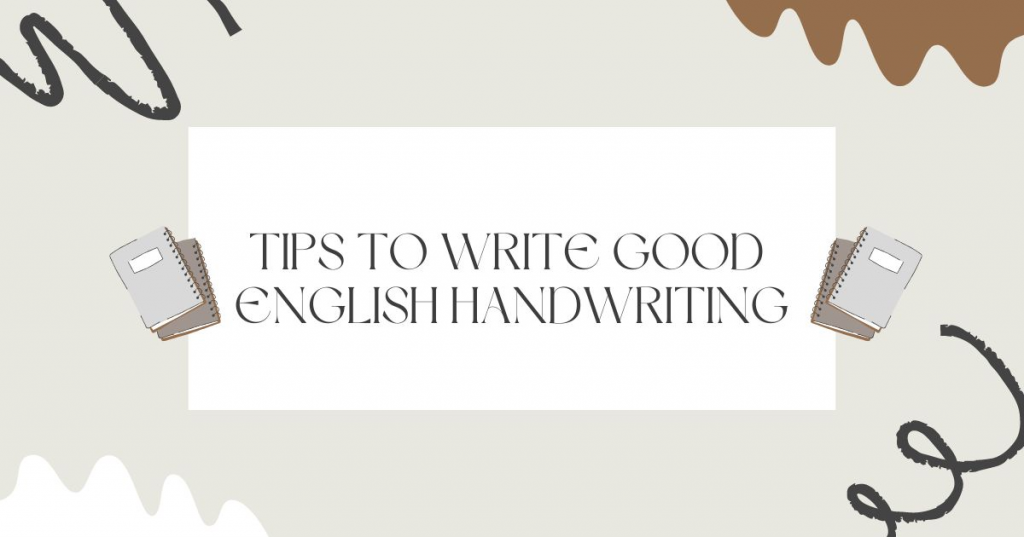English Handwriting Tips for Beginners
At SkillTrans, we believe that English handwriting remains a valuable soft skill in today's digital world. In this article, we explore the benefits of English handwriting, from practical applications to cognitive enhancements and personal expression.
We also introduce different English handwriting styles and provide tips to help you write good English handwriting. Whether you're a beginner or looking to improve your handwriting, this article has something for everyone.
In addition, if you're passionate about enhancing your soft skills, don't miss out on SkillTrans' Soft Skill blog – your go-to resource for valuable articles and insights.
Why Do You Need English Handwriting

In an increasingly digital world, the art of handwriting might seem obsolete. However, the skill of putting pen to paper offers numerous benefits that extend beyond mere communication.
Let's delve into the reasons why English handwriting remains relevant and valuable with SkillTrans:
Practical Applications
Note-Taking in School and Work: Handwritten notes often lead to better retention and understanding compared to typing. The process of physically writing engages different parts of the brain, solidifying information.
Filling Out Forms: While many forms are online, there are still instances where you'll need to fill out paper forms by hand. Legible handwriting ensures your information is accurately recorded.
Writing Personal Letters and Cards: A handwritten letter or card carries a personal touch that a digital message can't replicate. It shows you've invested time and thought into your communication.
Creative Expression: Handwriting is an art form. Calligraphy, journaling, and even simple doodling allow you to express yourself creatively and relieve stress. There is no shortage of works of art created by artists with beautiful handwriting.
Cognitive Benefits
Improved Memory and Information Retention: Studies have shown that the act of writing by hand activates parts of the brain associated with memory, leading to better recall of information.
Enhanced Fine Motor Skills: Handwriting helps develop and refine fine motor skills, which are essential for various tasks, from using tools to playing musical instruments.
Increased Focus and Attention to Detail: The slower pace of handwriting compared to typing encourages greater focus and attention to detail, which can translate to improved overall concentration.
The Personal Touch
A handwritten note shows care and effort: In a world of instant messaging and emails fueled by social media and email apps, a handwritten letter stands out as a thoughtful gesture. It conveys a level of care and effort that digital media often lacks.
Handwriting is a unique form of self-expression: Your handwriting is as unique as your fingerprints. It reflects your personality and style, turning each handwritten piece into a personal creation. Especially, if you are someone who has to sign or use writing for English work, practicing handwriting is extremely necessary.
So, English handwriting is far from a dying art. It offers a wide range of benefits, from practical applications to cognitive enhancements and personal expression. This is especially important for people who are learning English.
To start learning how to practice English handwriting. Let's learn about handwritten English writing styles with SkillTrans.
English Handwriting Styles
English handwriting styles encompass a variety of approaches, each with distinct characteristics. From the flowing grace of cursive to the clarity of print and the transitional nature of D'Nealian, the choice of handwriting style is both personal and functional.
Whether you're a beginner or looking to refine your penmanship, understanding the different styles can guide your practice and help you develop legible and expressive handwriting.
Cursive Handwriting

Cursive handwriting is characterized by connected letters that create a flowing script. Lauded for its speed and rhythmic elegance, cursive writing has been a staple in classrooms for generations.
This style allows for faster writing as the pen doesn't need to be lifted between each letter. However, it can be challenging for beginners to master due to its complex letter formations and may be less legible for those unfamiliar with the style.
Print Handwriting
Print handwriting, also known as block letters, features distinct, separate letters. Often favored for its clarity and ease of reading, print writing is the first style most children learn for several reasons: simplicity, readability, fine motor skill development, flexibility, and foundation for cursive.
Each letter is formed individually, making it simpler for beginners to understand and replicate. However, the need to lift the pen between each letter can make print writing slower than cursive.
D'Nealian Handwriting

The D'Nealian method is a hybrid handwriting style, designed as a bridge between print and cursive writing. Introduced as a way to simplify the transition to cursive, D'Nealian incorporates elements of both print and cursive styles.
This method aims to make the shift to cursive more intuitive by introducing simplified letter connections early on. However, as it's not universally adopted, some learners may find its unique letter formations less familiar than traditional print or cursive.
Which Type of English Handwriting is Best?
The best handwriting style is subjective and depends on your individual needs and preferences. There's no one-size-fits-all answer, but here are some factors to consider:
If you're a beginner, print handwriting is often the best place to start. Print handwriting, with its separate, unconnected letters, is easier to learn and helps establish proper letter formation.
As you become more comfortable with print, you might want to explore other styles. D'Nealian is a transitional style that bridges the gap between print and cursive, while cursive handwriting is known for its flowing, connected letters. These styles can be faster and more expressive than print.
Ultimately, the best handwriting style is the one that you find most comfortable and legible. Experiment with different styles and see what works best for you. Remember, the most important thing is that your handwriting is clear and easy to read.
Tips to Write Good English Handwriting

In this section, we will provide practical tips to help you write good English handwriting. From proper posture and grip to practicing basic strokes and mastering letter formation, we will guide you through the essential steps to improve your penmanship.
Remember, good handwriting not only enhances your written communication but also reflects your personality and attention to detail.
Posture and Grip
Proper posture and grip set the foundation for clear and legible handwriting: Sit up straight with your feet flat on the floor to maintain a comfortable and stable writing position. Hold your pen or pencil lightly, but firmly, between your thumb and index finger, resting it on your middle finger.
This relaxed grip allows for smooth movement and reduces hand fatigue.
In addition, you can also refer to the best sitting positions for studying or working through Leverage Edu's posture for studying blog posts.
Practice Tools
Choosing the right tools and resources can significantly enhance your handwriting practice: Begin with lined paper to guide your letter formation and maintain consistency in size and spacing. Select a pen or pencil that feels comfortable in your hand and produces smooth lines.
Consider using resources like handwriting worksheets and online guides that provide step-by-step instructions and practice exercises for each letter. We will suggest websites for handwriting worksheets later in this article.
Start with Basic Strokes
Mastering basic strokes is essential for developing fluent and well-formed letters: Start by practicing lines, curves, and loops, paying attention to their direction, size, and smoothness. These fundamental strokes form the building blocks of letters, and mastering them will improve your overall handwriting.
Dedicate 15-20 minutes each day to consistent practice, focusing on these basic strokes and gradually progressing to letters and words.
Additionally, if you find you can't concentrate, you can apply the Pomodoro learning method. This is a learning method that has been proven effective by many people in different fields.
Letter Formation
Proper letter formation is crucial for legibility and aesthetics: Pay attention to the height, spacing, and slant of each letter. Ensure that all letters are uniform in size and consistently spaced apart. Maintain a consistent slant throughout your writing, whether you prefer a slight rightward slant or perfectly vertical letters.
Be Patient
Remember, improving handwriting is a journey that requires patience and dedication: Be patient with yourself and don't get discouraged by initial challenges. Celebrate small victories as you notice improvements in your letter formation, consistency, and overall legibility.
With regular practice and a positive attitude, you will gradually develop neat and impressive English handwriting.
Websites for English Handwriting Worksheets
We provide a list of websites that offer free English handwriting worksheets. These worksheets are designed to help learners of all ages improve their penmanship and develop neat and legible handwriting:
WorksheetWorks.com
If you're looking for flexibility, WorksheetWorks.com is an excellent resource. This website allows you to create customized handwriting worksheets to match your specific needs. You can choose the font, size, spacing, and content to practice letters, words, or sentences.
HandwritingWorksheets.com
For a wide selection of free handwriting worksheets, HandwritingWorksheets.com is a great option. They offer various styles, including Zaner-Bloser, D'Nealian, and cursive, along with themed worksheets and activities to make handwriting practice engaging.
If readers discover any website about English handwriting worksheets that is interesting and useful, please leave a comment below for other SkillTrans readers to know. Thank you!
Conclusion
In conclusion, the art of English handwriting offers numerous practical, cognitive, and personal benefits. By exploring different styles such as cursive, print, and D'Nealian, and following tips on posture, grip, practice tools, basic strokes, and letter formation, you can develop legible and expressive handwriting.
Remember to be patient and celebrate your progress as you embark on this rewarding journey.
Also, don't forget to join the free as well as premium courses available on SkillTrans. These online courses can help you gain additional hard skills and soft skills needed to apply to work or apply for a job. Wish you have a lot of fun studying with SkillTrans.

Meet Hoang Duyen, an experienced SEO Specialist with a proven track record in driving organic growth and boosting online visibility. She has honed her skills in keyword research, on-page optimization, and technical SEO. Her expertise lies in crafting data-driven strategies that not only improve search engine rankings but also deliver tangible results for businesses.



